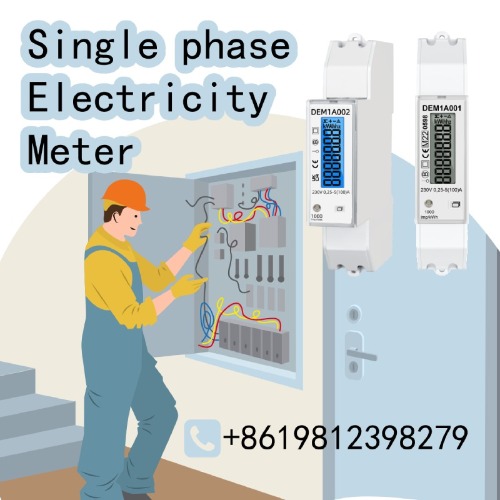
The energy meter belongs to measuring products and has the characteristics of electronic products. There are certain precautions to be taken when installing them.
The installation precautions for residential energy meters include the following:
1. Installation location
Energy meters should be installed in a bright and dry place, and should be easy to read, experiment, and connect. At the same time, the energy meter should be installed away from strong magnetic fields to avoid interference. In addition, the installation location of the energy meter should consider convenience for inspection and maintenance. Common installation positions for single-family houses are generally at the entrance, and for multi-story high-rise apartments, they are usually installed in the first-floor corridor or in a dedicated electrical well.
2. Installation direction
The energy meter should be installed in the specified direction, generally vertical installation. This not only ensures accurate measurement of the energy meter but also avoids damage to energy meter due to tilting or vibration.
Secure installation: The energy meter should be installed in a secure place to avoid damage caused by external factors. Although the tilt of the installation of the energy meter does not affect the accuracy of measurement, it is preferable to keep it horizontal during the installation process for better data viewing and aesthetics.
3. Wire connection
When connecting the power line of the energy meter, it is necessary to ensure that the power supply line is disconnected, and to connect according to the wiring diagram specified by the energy meter, ensuring a firm and well-insulated connection. Pay special attention to not connecting the live and neutral wires incorrectly or short-circuiting, as this can cause abnormal operation or damage to energy meter. The power line connection must be secure to avoid poor contact that can cause abnormal operation or damage to energy meter.
4.Power Test
The installation and connection of the energy meter is completed. The terminal knob cover needs to be restored and installed first to protect the exposed power terminal and ensure the safety of personnel during power-on. After power-on, check if the LCD of the energy meter can display normally, check if the power page shows 0 degrees, turn on the electrical appliances in the home, and check if the pulse indicator of the energy meter will flash. If the power page shows 0 degrees and the pulse indicator flashes, it means that the energy meter is functioning properly.
5. Smart Energy Meter Debugging
For smart energy meters and IoT energy meters, after installation and power-on, the communication function needs to be debugged to ensure that the electricity consumption data can be transmitted to the system platform. For RS485 communication, check if the communication line is correctly and securely connected; for wireless communication such as RF, LoRa, WiFi, GPRS, NB-IoT, ensure that there are no metal obstructions around energy meter, and for energy meters installed in metal energy meter boxes, the antenna needs to be led outside the box to ensure that the wireless signal can be received well. By reading the energy meter data through the system platform, it can be ensured that the communication connection is normal.
6. Regular Inspection and Maintenance
 Regular inspection and maintenance of the energy meter can ensure its normal operation and timely detect and solve potential problems. It is recommended to regularly check the appearance, wiring, and accessories of energy meter for any damage, and regularly clean and maintain it. For energy meters with communication functions, it is necessary to check if the transmission of electricity consumption data is normal on the system platform.
Regular inspection and maintenance of the energy meter can ensure its normal operation and timely detect and solve potential problems. It is recommended to regularly check the appearance, wiring, and accessories of energy meter for any damage, and regularly clean and maintain it. For energy meters with communication functions, it is necessary to check if the transmission of electricity consumption data is normal on the system platform.
The installation of energy meters requires professional personnel with electrical qualifications and knowledge of energy meter installation principles. It is necessary to choose the correct installation location, the correct installation method, and the correct debugging process in order to install and put the energy meter into use properly. Before installation, some preparations need to be made, such as purchasing suitable energy meters and accompanying accessories, such as current transformers and voltage transformers; in terms of tools, an electrical pen, a Phillips screwdriver, a flathead screwdriver, electrical tape, etc., are needed.

 English
English 中文简体
中文简体



.jpg?imageView2/2/w/500/h/500/format/png/q/100)






.jpg?imageView2/2/w/500/h/500/format/png/q/100)



